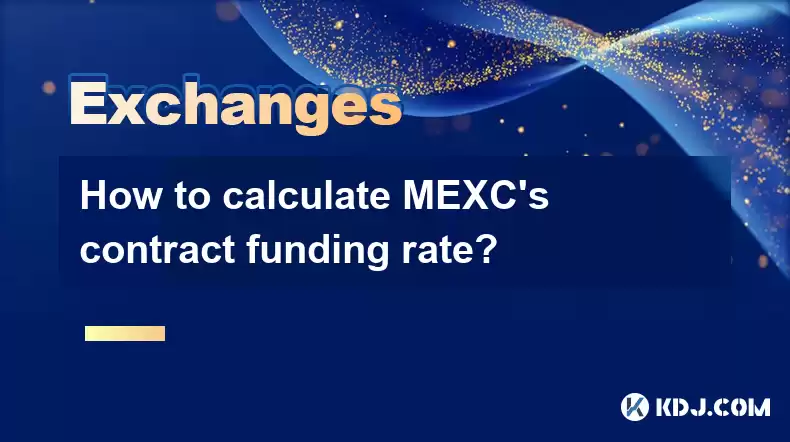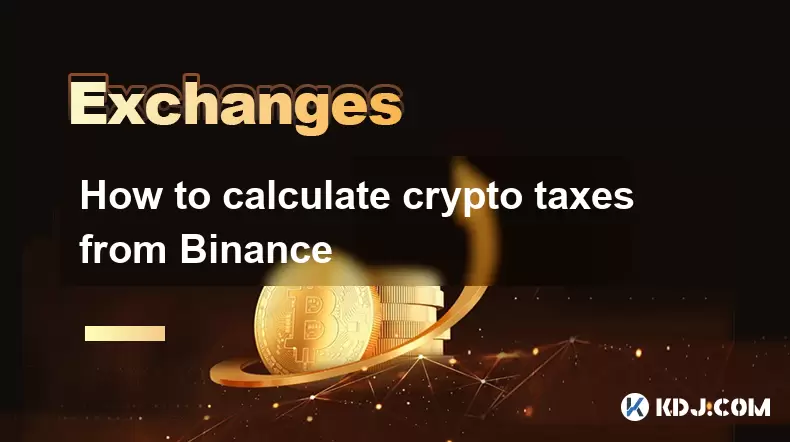-
 Bitcoin
Bitcoin $117500
2.15% -
 Ethereum
Ethereum $3911
6.19% -
 XRP
XRP $3.316
10.79% -
 Tether USDt
Tether USDt $1.000
0.01% -
 BNB
BNB $787.2
2.24% -
 Solana
Solana $175.2
4.15% -
 USDC
USDC $0.9999
0.00% -
 Dogecoin
Dogecoin $0.2225
8.40% -
 TRON
TRON $0.3383
0.28% -
 Cardano
Cardano $0.7868
6.02% -
 Stellar
Stellar $0.4382
9.34% -
 Hyperliquid
Hyperliquid $40.92
7.56% -
 Sui
Sui $3.764
7.63% -
 Chainlink
Chainlink $18.48
10.66% -
 Bitcoin Cash
Bitcoin Cash $582.1
1.88% -
 Hedera
Hedera $0.2601
6.30% -
 Avalanche
Avalanche $23.33
4.94% -
 Ethena USDe
Ethena USDe $1.001
0.02% -
 Litecoin
Litecoin $122.3
2.04% -
 UNUS SED LEO
UNUS SED LEO $8.969
-0.27% -
 Toncoin
Toncoin $3.339
0.86% -
 Shiba Inu
Shiba Inu $0.00001287
4.30% -
 Uniswap
Uniswap $10.43
7.38% -
 Polkadot
Polkadot $3.861
5.08% -
 Dai
Dai $1.000
0.02% -
 Bitget Token
Bitget Token $4.513
3.41% -
 Monero
Monero $267.7
-6.18% -
 Cronos
Cronos $0.1499
4.14% -
 Pepe
Pepe $0.00001110
5.15% -
 Aave
Aave $284.9
8.28%
How to calculate MEXC's contract funding rate?
To calculate MEXC's funding rate, use the formula F = clamp(P * I, -0.05%, 0.05%), where P is the premium index and I is the interest rate.
Apr 03, 2025 at 04:35 pm

Understanding how to calculate MEXC's contract funding rate is crucial for traders engaging in perpetual futures contracts. The funding rate is a mechanism designed to keep the perpetual futures price closely aligned with the spot price of the underlying asset. This article will guide you through the process of calculating the funding rate on MEXC, explaining each component and providing a detailed walkthrough.
What is the Funding Rate?
The funding rate is a periodic payment made between traders based on the difference between the perpetual contract's market price and the spot price of the underlying asset. If the funding rate is positive, long position holders pay short position holders, and if it is negative, short position holders pay long position holders. This mechanism helps to ensure that the perpetual contract's price does not deviate significantly from the spot price.
Components of the Funding Rate
To calculate the funding rate on MEXC, you need to understand its three main components:
- Interest Rate (I): This is the cost of holding a position overnight. It is usually a small percentage, such as 0.03% per day.
- Premium Index (P): This represents the difference between the perpetual contract's price and the spot price. It is calculated as the average of the difference between the perpetual contract's price and the spot price over a specific period.
- Clamp Function (C): This is a function that limits the funding rate to prevent extreme values. It is typically set to a range, such as -0.05% to 0.05%.
Formula for Calculating the Funding Rate
The funding rate (F) on MEXC is calculated using the following formula:
[ F = P + I ]
However, the final funding rate is subject to the clamp function:
[ F = \text{clamp}(P + I, -0.05\%, 0.05\%) ]
Step-by-Step Guide to Calculating the Funding Rate
To calculate the funding rate on MEXC, follow these steps:
- Determine the Interest Rate (I): Check the current interest rate on MEXC's platform. For example, if the interest rate is 0.03% per day, this is your I value.
- Calculate the Premium Index (P): The premium index is calculated by MEXC and is usually available on their platform. You can find it in the contract details section. For example, if the premium index is 0.02%, this is your P value.
- Apply the Clamp Function (C): Add the interest rate and the premium index to get the raw funding rate. Then, apply the clamp function to ensure the funding rate falls within the acceptable range. For example, if P + I = 0.05%, and the clamp function range is -0.05% to 0.05%, the final funding rate would be 0.05%.
Example Calculation
Let's go through an example to illustrate the calculation:
- Interest Rate (I): 0.03%
- Premium Index (P): 0.02%
First, calculate the raw funding rate:
[ P + I = 0.02\% + 0.03\% = 0.05\% ]
Next, apply the clamp function:
[ \text{clamp}(0.05\%, -0.05\%, 0.05\%) = 0.05\% ]
So, the final funding rate in this example is 0.05%.
Accessing Funding Rate Information on MEXC
To access the funding rate information on MEXC, follow these steps:
- Log into your MEXC account: Ensure you are logged into your MEXC account to access the necessary data.
- Navigate to the Futures Trading Section: Go to the futures trading section of the platform.
- Select the Contract: Choose the perpetual futures contract you are interested in.
- View Contract Details: In the contract details section, you will find the current funding rate, interest rate, and premium index.
Importance of Monitoring the Funding Rate
Monitoring the funding rate is essential for several reasons:
- Position Management: Understanding the funding rate helps you manage your positions more effectively. If the funding rate is high, holding a long position could be costly, and vice versa for short positions.
- Trading Strategy: The funding rate can influence your trading strategy. For example, if you anticipate a high funding rate, you might choose to close your long positions before the funding payment is due.
- Risk Management: By keeping an eye on the funding rate, you can better manage your risk exposure and avoid unexpected costs.
Frequently Asked Questions
Q: How often is the funding rate calculated on MEXC?
A: The funding rate on MEXC is typically calculated every 8 hours. This means that funding payments are made three times a day, at 00:00, 08:00, and 16:00 UTC.
Q: Can the funding rate be negative?
A: Yes, the funding rate can be negative. If the premium index is negative and the interest rate is not enough to offset it, the funding rate can become negative, meaning short position holders will pay long position holders.
Q: How does the clamp function affect the funding rate?
A: The clamp function limits the funding rate to a specific range to prevent extreme values. If the calculated funding rate falls outside this range, it will be adjusted to the nearest limit within the range. This helps maintain stability in the market.
Q: Where can I find historical funding rate data on MEXC?
A: Historical funding rate data can be found in the contract details section of the MEXC platform. Look for a tab or section labeled "Funding Rate History" or similar, where you can view past funding rates for the selected contract.
Disclaimer:info@kdj.com
The information provided is not trading advice. kdj.com does not assume any responsibility for any investments made based on the information provided in this article. Cryptocurrencies are highly volatile and it is highly recommended that you invest with caution after thorough research!
If you believe that the content used on this website infringes your copyright, please contact us immediately (info@kdj.com) and we will delete it promptly.
- Ethereum, Staking Yields, and DeFi Exposure: A New Era for Investors?
- 2025-08-08 15:10:12
- Unilabs Pumps MIA, Binance Coin Bouncing Back, and Ethereum's Bearish Blues
- 2025-08-08 15:10:12
- Ethereum's Wyckoff Markup and Market Rotation: A New Era?
- 2025-08-08 15:30:12
- Ethereum, Vitalik Buterin, and the Overleveraged Game: A Balancing Act
- 2025-08-08 15:30:12
- Ethereum, Corporate Treasuries, and Vitalik Buterin: A New Era for ETH?
- 2025-08-08 15:36:08
- BNB Price, Binance Staking, and SEC Concerns: What's the Deal?
- 2025-08-08 15:36:08
Related knowledge

How to use margin trading on Poloniex
Aug 08,2025 at 09:50am
Understanding Margin Trading on Poloniex

How to use advanced trading on Gemini
Aug 08,2025 at 04:07am
Understanding Advanced Trading on GeminiAdvanced trading on Gemini refers to a suite of tools and order types designed for experienced traders who wan...

How to deposit USD on Bitstamp
Aug 07,2025 at 05:18pm
Understanding Bitstamp and USD DepositsBitstamp is one of the longest-standing cryptocurrency exchanges in the industry, offering users the ability to...

How to use the Kraken Pro interface
Aug 08,2025 at 09:57am
Understanding the Kraken Pro Interface LayoutThe Kraken Pro interface is designed for both novice and experienced traders seeking a streamlined experi...

How to find my transaction ID on Gemini
Aug 08,2025 at 12:50am
Understanding the Transaction ID in Cryptocurrency ExchangesA transaction ID (TXID) is a unique alphanumeric string that identifies a specific transfe...

How to calculate crypto taxes from Binance
Aug 08,2025 at 07:56am
Understanding Cryptocurrency Taxation on BinanceCalculating crypto taxes from Binance requires a clear understanding of how tax authorities classify d...

How to use margin trading on Poloniex
Aug 08,2025 at 09:50am
Understanding Margin Trading on Poloniex

How to use advanced trading on Gemini
Aug 08,2025 at 04:07am
Understanding Advanced Trading on GeminiAdvanced trading on Gemini refers to a suite of tools and order types designed for experienced traders who wan...

How to deposit USD on Bitstamp
Aug 07,2025 at 05:18pm
Understanding Bitstamp and USD DepositsBitstamp is one of the longest-standing cryptocurrency exchanges in the industry, offering users the ability to...

How to use the Kraken Pro interface
Aug 08,2025 at 09:57am
Understanding the Kraken Pro Interface LayoutThe Kraken Pro interface is designed for both novice and experienced traders seeking a streamlined experi...

How to find my transaction ID on Gemini
Aug 08,2025 at 12:50am
Understanding the Transaction ID in Cryptocurrency ExchangesA transaction ID (TXID) is a unique alphanumeric string that identifies a specific transfe...

How to calculate crypto taxes from Binance
Aug 08,2025 at 07:56am
Understanding Cryptocurrency Taxation on BinanceCalculating crypto taxes from Binance requires a clear understanding of how tax authorities classify d...
See all articles

























































































